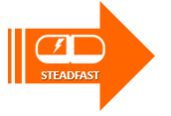Difference between revisions of "ANLY482 AY2017-18 T1 Group03/Final Progress"
Gc.chow.2014 (talk | contribs) |
Gc.chow.2014 (talk | contribs) |
||
| Line 74: | Line 74: | ||
There were 6 main files sent to us by client out of which 5 of them have been extensively used. For our research, we obtained a full year data of 2016 and 2017 data till August. | There were 6 main files sent to us by client out of which 5 of them have been extensively used. For our research, we obtained a full year data of 2016 and 2017 data till August. | ||
<br> | <br> | ||
| − | {| class="wikitable" | + | |
| + | {| class="wikitable" width="100%" | ||
|- | |- | ||
! File Name (Scrubbed for confidentiality) | ! File Name (Scrubbed for confidentiality) | ||
| Line 99: | Line 100: | ||
| Information on transactions | | Information on transactions | ||
| ~9,000,000 | | ~9,000,000 | ||
| − | |} | + | |}</div> |
'''3.2 Tools Used''' | '''3.2 Tools Used''' | ||
Revision as of 15:14, 3 December 2017
| Home | About Us | Project Overview | Midterm Progress | Final Progress | Project Management | Documentation |
Assessing the effectiveness of sales representatives’ interactions with customer on revenue is an essential business process pivotal to the success of a business entity. Our team analysed the effects of customer interactions on sales revenue with an objective to use analytical evidence to determine the optimal level of interaction to achieve maximum sales revenue. The research uses local data collected from a global pharmaceutical company ("Pharmaceutical Company X"). An Analysis of Variance ("ANOVA") method is used to identify groups that benefit from higher levels of interactions. Factor groups include the company’s key products with subsequent study of the various sales channel.
Through our analysis, we have identified that products generally benefit from face to face interactions as compared to phone web calls. We identified certain products to show conclusive evidence of a significantly higher mean in sales correlating with higher number of interactions. In addition, certain channels have been identified as most reactive to face to face interaction. These results were presented to Pharmaceutical Company X to recommend an optimal level of interaction for each product to maximize sales revenue. The analysis is limited to 2 years of data collected from one entity. Results may vary if analysis is conducted on data over a longer span of time or from another entity.
Keywords:
Sensitivity analysis, pharmaceutical, products, therapy area, channel, sales interaction
Pharmaceutical Company X aims to maintain its market share for its products in Singapore, requiring them to employ an effective marketing strategy to increase sales. The use of analytics will help them understand consumers’ purchasing patterns and trends in Singapore and the effectiveness of the promotional activities conducted by the company. The objective of this project is to help Pharmaceutical Company X understand the effectiveness of its customer interactions in driving sales.
Sensitivity analysis is used to determine how “sensitive” a model is to changes in the value of the parameters of the model and to the changes in the structure in the model (Breierova, Choudhari 2001). By using sensitivity analysis, one can show how a model responds to changes in its parameters which is important for building models and evaluating them. This is useful in business terms because it ultimately helps a firm realise the dynamics of its business system. Analysing a wide range of values for a model can offer deeper insights into the behaviour of the system in extreme situations (Breierova, Choudhari 2001). ANOVA or Analysis of Variance test has been used widely in marketing strategies to identify and address different target groups. In retail, research has shown that different type of shipping trip is strongly related to purchases made on promotion and different levels of unplanned purchases, which enable managers to strategize appropriate promotional and initiatives to maximize purchasing outcomes (Anic and Radas,2006). Analysis of variance test conducted in big bazaar retail outlets reveal significant differences upon introduction of various strategies and concludes the need for management to carry them out to effectively improve growth (Aluregowda, 2013).
As there is insufficient literature on using ANOVA in the pharmaceutical company, we use previous team’s research methods to build on our current model while also gaining better understanding of the business environment and the technical methods involved. The previous research involved segmenting the data into different factor groups and using ANOVA to understand the actual impact of sale interactions on each group. Their factors involved mainly the different therapy areas associated with the client company. As our client wanted us to dig deeper into the sensitivity analysis, we will be focusing on the three different levels involved in this environment. We will be assessing therapy areas first and validate the previous research results and then go deeper into product and channel level for each therapy area.
3.1 Data Collection
There were 6 main files sent to us by client out of which 5 of them have been extensively used. For our research, we obtained a full year data of 2016 and 2017 data till August.
| File Name (Scrubbed for confidentiality) | Description | Number of Rows |
|---|---|---|
| Customer Interaction | Information on interaction details | ~213,000(FTF) & ~421,000(PW) |
| Employee File | Information on employee teams | ~2000 |
| Customer (Organisations) | Information on healthcare organisations | ~117,000 |
| Customer (non-Organisation) | Information on healthcare professionals | ~205,000 |
| Invoice | Information on transactions | ~9,000,000 |
3.2 Tools Used
Our research has extensively used SAS JMP Pro 13 for data cleaning and transformation and for confirmatory analysis because of its intuitive system and simplistic approach. During the initial period, there has been considerable usage of Tableau Software for exploratory data analysis because of its easy visualisations for understanding the data.

